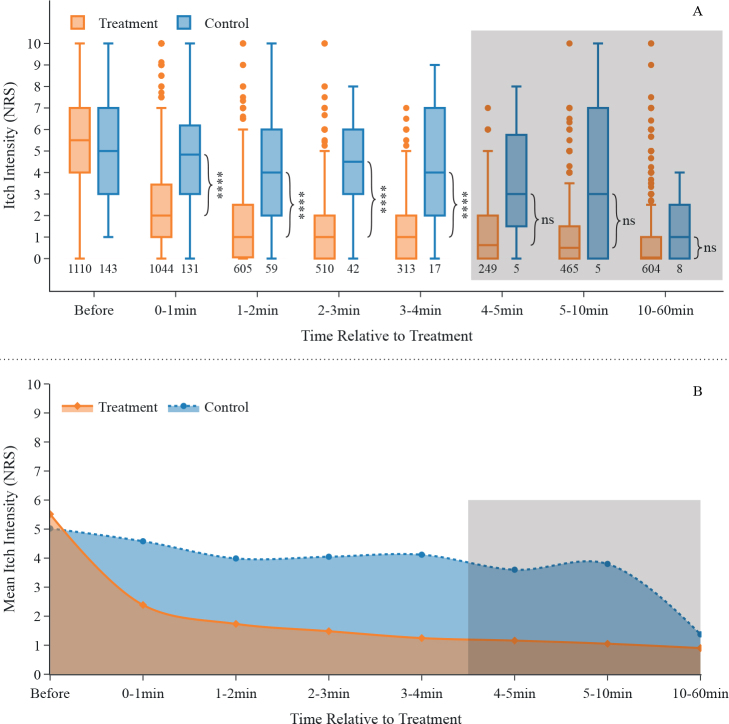Fig. 5.
Application of concentrated heat results in a faster reduction of itch following mosquito bites compared with non-treatment controls. (A) Data are presented as box and whiskers, shown with median, upper and lower quartile, whiskers 1.5 interquartile range; multiple observations of same participants were summarized using mean. Data shown as “0–1 min” includes all itch-ratings ranging from directly after the treatment up to and including 1 min after the treatment. Numbers below the boxes depict numbers of participants in the corresponding group. The last 3 time-bins are greyed out as the control group contains very little data. ****p < 0.0001; ns: p>0.05; effect sizes CL for each time bin, starting with 0–1 min: 0.89, 0.87, 0.80, 0.81, 0.66, 0.70, 0.62 (H0:∆treatment ≤ ∆control for each time group with ∆: reduction of itch intensity compared with before). (B) Area under the curve-plot showing reduction of itch over time for treatment- and control group (itch intensity displayed as mean); multiple observations of same participants were summarized using mean. The last 3 time-bins are greyed out as the control group contains very little data. NRS: numerical rating scale.

